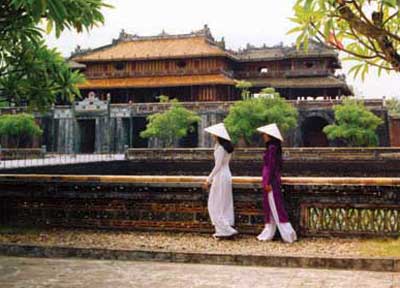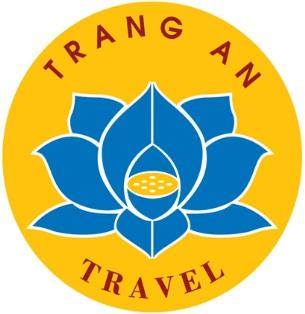Hue Imperial City

Hue is one of places which have many cultural heritage. Up to now, there is no place like Hue remaining a lot of originally historical vestiges as in this ancient Capital City.
On the northern bank of Perfume River has relics consisting of palaces, which were constructed as arc defensive ramparts with 11km length. This valuable construction includes more than 100 architectural works which were extremely reflected the life of Emperors and mandarins under reign of Nguyen. Situated in the middle of hills on the southern bank of Perfume River are very beautiful tombs of Kings Nguyen. Among these tombs are the four famous ones with the name and the arrangements of the tomb reflected each Emperor's points of view, personality and tastes. This is majestic Gia Long Tomb, imposing Minh Mang Tomb, poetic Tu Duc Tomb and magnificent Khai Dinh Tomb.
Hue is also an important center of Buddhism. In Hue and its surrounding still exist tens of pagodas constructed more 300 years ago, and a hundred of temples and pagodas built in the early century. Besides, Hue is a place where the royal music is originated, and a place with traditional famous dishes and sophisticated handicraft.
As a unique city of Vietnam still remains its form of City under Middle Age and the constructions of monarchic, Hue has become a big and invaluable museum. Therefore, vestiges in Hue ancient capital have been classified by the government as a very precious property and on December 1993 Hue has been recognized as a World Cultural Heritage Site by UNESCO.
Hue is also an important center of Buddhism. In Hue and its surrounding still exist tens of pagodas constructed more 300 years ago, and a hundred of temples and pagodas built in the early century. Besides, Hue is a place where the royal music is originated, and a place with traditional famous dishes and sophisticated handicraft.
As a unique city of Vietnam still remains its form of City under Middle Age and the constructions of monarchic, Hue has become a big and invaluable museum. Therefore, vestiges in Hue ancient capital have been classified by the government as a very precious property and on December 1993 Hue has been recognized as a World Cultural Heritage Site by UNESCO.
Tin tức liên quan
- Vietnamese second most confident in Asia-Pacific about post-pandemic travel: survey (24/6/2022)
- Kayaking in Việt Nam’s most beautiful places (24/04/2021)
- Da Nang tops Google list of 10 trending destinations for 2020
- Explore Vân Long Wetland Nature Reserve in Ninh Bình
- Hà Nội Train Street among Top 8 over-touristed sites (03/12/2019)
- VNAT hosts famtrip to explore sea and island tourism products in Quang Nam and Quang Ngai
- Travel Daily News lists amazing ways to see Viet Nam (21/06/2019)
- Ha Noi serves nearly 14.4 million visitors so far (21/06/2019)
- CNN praises Hoi An as one of the most beautiful towns in Southeast Asia (19/06/2019)
- Quang Ninh has additional sea and island tourism site (14/06/2019)
Tìm kiếm
Tour
Hotel
Keyword
Location
Location
Star
Type







